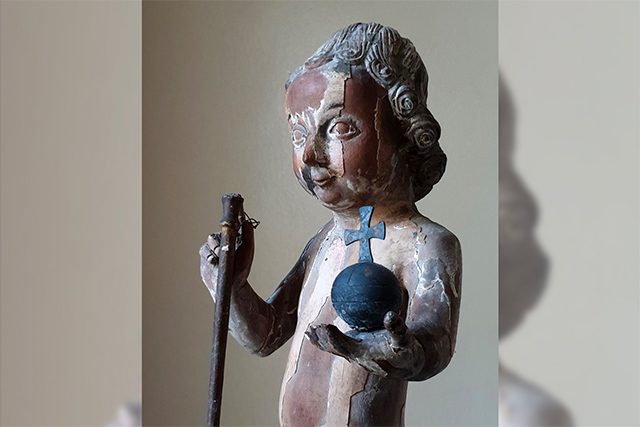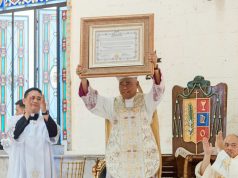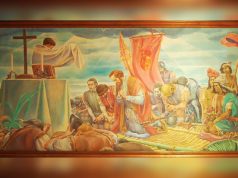
The centuries-old image of the child Jesus finally reached his home parish in Southern Leyte province on Saturday, more than three decades after it was stolen.
The image was welcomed with a mobile procession and thanksgiving Mass at the Sto. Niño Parish in Malitbog town.
Prior to the procession, a simple turnover ceremony was held at the Maasin Cathedral with Bishop Prescioso Cantillas and Mr. Francis Ong, who was instrumental for the return of the icon.
“It is indeed with great joy and gratitude that we in the diocese welcome back the Sto. Niño de Malitbog,” Cantillas said.
He added that it is significant that the image was returned in time for the Church’s celebration of 500 years of Christianity in the Philippines.
“It’s like God finding us again, his people, so that from now on we will renew our faith in him,” the bishop said.
From the cathedral, the image arrived at the Malitbog church at around 11:00 a.m. and was greeted with loud applause and shouts of “Viva Señor Sto. Niño”.
Many people also lined up the route of the motorcade to catch a glimpse of the statue on its way to Malitbog.
The diocese said it was in 1988, after the Sinulog festivities in Cebu City, when the venerated image of the child Jesus vanished and was declared lost.
Parishioners recounted that many church objects also disappeared around the same time the icon got lost.
In September, Mr. Ong, an antique collector, found out that one of images in his collection was Malitbog’s lost revered image.
READ: Stolen Sto. Niño image from Southern Leyte church found after 32 years
Without delay, he decided to return the wooden statue to the Maasin diocese.
The same image, described as more or less 300-year-old, appeared in the book titled “Santo Niño: The Holy Child Devotion in the Philippines” that was published in 2001.
Sculptured in the 18th century, the diocese said that the intention of the artist is clear that the icon is a copy of the widely venerated Sto. Niño de Cebu.
The image also underwent restoration works at an atelier in Manila before it was brought back to Malitbog.








